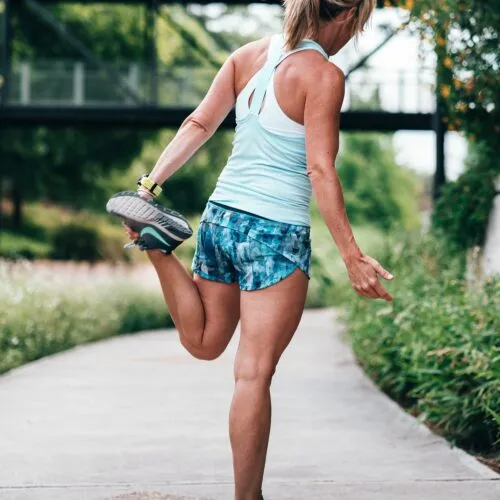Whether your weekend activities included boot camp, mowing, golfing, biking or cross fit you put some significant physical stress on your body. This may be resulting in physical discomfort come Monday morning.
We often get asked when these types of aches and stiffness creep up . . .
“how do I know if it’s pain or soreness?” AND “should I be worried about it?”
It’s important to remember that each individual’s body reacts differently to the stresses we place on it. The body will require more adaptation – and subsequent muscle soreness – if the action is more strenuous than we are used to, use muscles we don’t often work, or we are returning to physical activity after a period of inactivity.
The following signs indicate the discomfort you are experiencing is “normal” muscle soreness:
- Muscles are tender to touch.
- A tight or taut feeling in the muscles.
- You experience a slight burning sensation with movement.
- Typically peaks 24-72 hours after activity.
- Gently moving and stretching the muscles helps decrease the soreness.
This type of muscular soreness is a healthy and expected result of exercise. During the few days following you can focus on working different muscle groups and perform activities such as stretching and Epsom salt baths to aid in recovery.
However, if your pain meets the following criteria you may be looking at an injury:
- Pain is sharp or sudden during an activity.
- Discomfort lasts greater than 72 hours.
- Pain becomes worse with gentle movement or stretching.
- The pain continues to linger after a period of rest.
In these cases, pain may be indicative of injury.
Ignoring pain and contributing your discomfort to “just muscle soreness” can result in more severe injury. This is the misguided “no pain, no gain” mentality seen often in the fitness industry.
If you have pain that is extreme or does not resolve in about a week, you should consult with a medical professional. The sooner the situation is assessed and addressed the sooner you will be able to get back to your favorite activities.
When an injury occurs, a physical therapist can assist in your recovery in many ways (and no you don’t need to see your Doctor first).
Initially, they can assist with pain management, identify and address all the factors that may have contributed to your injury to prevent further problems, and provide specific recommendations regarding your return to appropriate exercise.
Still not sure if you are just sore or are actually injured?
Request a free call from a Doctor of Physical Therapy. They can help you decide the next best step – whether that be seeking medical help or just discussing strategies for recovering and ways to minimize your chance of becoming injured int he future. Just click the link below to get started.


